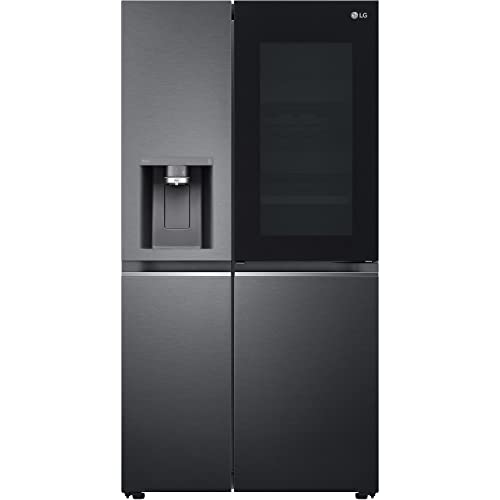The Ultimate Guide to Buying a Fridge: Making Smart Choices for Your Kitchen
When it comes to important kitchen area appliances, couple of items are as essential as a refrigerator. It is the heart of the kitchen-- keeping your food fresh and your active ingredients at optimum temperatures. However, choosing the best fridge can be a complicated job, provided the variety of styles, sizes, and innovations readily available on the marketplace. This guide will supply valuable insights into the aspects to consider when buying a fridge, typical types, and frequently asked questions to assist you make an informed decision.
Secret Factors to Consider When Buying a Fridge
To streamline your decision-making procedure, here are the core aspects one must consider when seeking to buy a fridge:
1. Size
- Kitchen Space: Measure the area in your kitchen where the fridge will be positioned. This includes inspecting entrances to make sure the fridge can be provided without concern.
- Capacity: Consider just how much food you typically keep. A bigger family may require a fridge with a capability of 20-26 cubic feet, while smaller households may find 10-18 cubic feet adequate.
2. Style
- Top Freezer Refrigerators: A conventional option that features a freezer on top. They are usually more affordable and energy-efficient.
- Bottom Freezer Refrigerators: Offers convenience by positioning the refrigerator area at eye level. Ideal for those who access fresh food more frequently.
- Side-by-Side Refrigerators: Provides simple access to both freezer and fresh food areas. Great for narrow cooking areas.
- French Door Refrigerators: Combines the benefits of bottom freezers with side-by-side designs. Best Fridge feature extra functions such as ice and water dispensers.
- Compact Refrigerators: Perfect for little spaces like dormitory or offices.
3. Energy Efficiency
- Search for energy-efficient models to save on electricity costs. Inspect the Energy Star label, which shows that the home appliance satisfies or surpasses energy performance standards.
- Think about the typical yearly energy usage reported in kilowatt-hours (kWh).
4. Features
- Ice and Water Dispenser: Convenient for immediate access to ice and filtered water.
- Smart Technology: Some fridges come equipped with Wi-Fi connection that enables you to monitor and adjust settings from your smart device.
- Adjustable Shelves and Bins: For adjustable storage to accommodate high products.
- Temperature Control Zones: Different areas may have various environment controls for optimum storage of various foods.
5. Price
- Set a budget plan. Fridge rates can range from a couple of hundred to a number of thousand dollars depending upon design, size, and features.
- Think about additional costs such as extended guarantees, delivery, and setup.
Relative Table of Popular Fridge Styles
| Fridge Style | Average Price Range | Pros | Cons |
|---|---|---|---|
| Top Freezer | ₤ 400 - ₤ 1,200 | Cost effective, energy-efficient | Minimal features |
| Bottom Freezer | ₤ 900 - ₤ 2,500 | Easy access to fresh food | Can be expensive |
| Side-by-Side | ₤ 600 - ₤ 3,000 | Good organization, simple access | Freezer space can be limited |
| French Door | ₤ 1,200 - ₤ 4,000 | Spacious, elegant, typically feature-rich | Greater rate point |
| Compact | ₤ 150 - ₤ 600 | Space-saving, portable | Minimal storage capacity |
Regularly Asked Questions (FAQs)
1. For how long do fridges normally last?
Generally, a well-maintained refrigerator can last around 10 to 20 years. Routine maintenance, such as cleaning up the coils and checking door seals, can lengthen its life expectancy.
2. How can I preserve my fridge efficiently?
- Keep the coils tidy to help preserve energy efficiency.
- Ensure that the door seals are tight to prevent cold air from getting away.
- Regularly thaw (if suitable) and tidy the interior to avoid build-up of bacteria and odors.
3. Do I need to spend for shipment and setup?
A lot of sellers charge for delivery and setup, however this fee can often be waived during promos. Constantly validate the charges before finishing your purchase.
4. What should I do if my fridge is not cooling appropriately?
Start by checking the temperature settings and ensure the vents are clear of any blockages. If the problem continues, it might be necessary to consult an expert repair service.
5. How can I figure out the size of the fridge I need?
As a basic standard, permit for about 4 to 6 cubic feet of space per person in your home. However, this can vary based upon private cooking and storage practices.
Purchasing a refrigerator might seem simple, however it needs careful consideration of different elements. By examining your requirements and preferences in regards to size, design, functions, and energy efficiency, you're much better placed to pick a fridge that will serve your home well for years to come. This guide aims to streamline the complexities involved in fridge shopping, empowering you to make a notified decision that will enhance your cooking area experience. Whether you're upgrading or purchasing your very first unit, a little research can lead to a refrigerator that completely fits your lifestyle and cooking habits.

